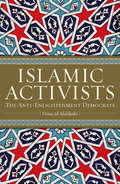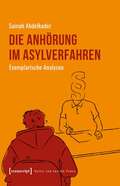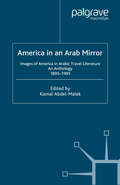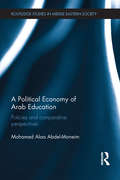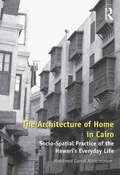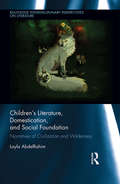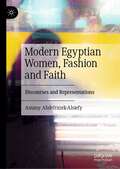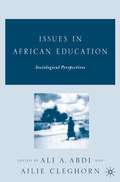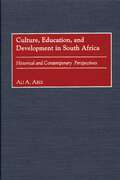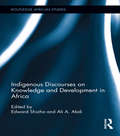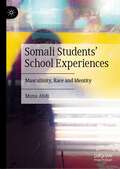- Table View
- List View
Islamic Activists: The Anti-Enlightenment Democrats
by Deina Ali AbdelkaderIn the hysteria surrounding Political Islam, it is difficult to find analysis that doesn't justify the existence of Islamic leaders or react to the West's fear of 'extremists'. In Islamic Activists, Deina Ali Abdelkader shows us what Islamic leaders and activists believe and what they think about just governance.*BR**BR*Explaining and comparing Islamist ideas, including those about leadership, justice and minority rights, Abdelkader explains how these have been represented in the writings of important historical and contemporary Islamists. In doing so, Abdelkader reveals that democracy is not the sole preserve of those who support Enlightenment values, offering the reader a chance to understand the populist non-violent side of Islamic activism. *BR**BR*The book includes an examination of the ideas of the leaders of the populist Islamist movements in Egypt, Tunisia and Morocco.
Die Anhörung im Asylverfahren: Exemplarische Analysen (Kultur und soziale Praxis)
by Samah AbdelkaderDie Anhörung im Asylverfahren ist seit über 60 Jahren die bedeutendste Etappe für Asylbewerber*innen in Deutschland. Nur in dieser einmaligen mündlichen Anhörung können die Antragsteller*innen Gründe für ihr Asylgesuch vortragen und ihre Fluchtgeschichte rekonstruieren - doch dieser Prozess wurde bisher kaum untersucht. Anhand von Fallanalysen zeigt Samah Abdelkader auf, dass die Rekonstruktionsverfahren während der Befragung nicht planlos entstehen, sondern methodisch systematischen Techniken folgen und sich an drei Kategorien orientieren: der internen sowie der externen Kohärenzprüfung der Fluchtgeschichte und der Prüfung von außertextuellen Indikatoren.
Change and Development in the Gulf
by Abbas AbdelkarimProcesses of change, stagnation and development in the countries of the Gulf Co-operation Council are analyzed in this book. The contributors show impact of oil revenues on population change and social development and on redefining the socio-economic role of the state. Oil could open venues for industrialization and development. However, lack of population policies, problems of human resources development, the rather slow change in gender relations and in political systems and heavy spending on militarization, it is argued, could impede development endeavour.
Sudan: The Gezira Scheme and Agricultural Transition
by Abbas Abdelkarim Tony BarnettThe authors propose that the Gezira scheme has played a paradoxical role in the capitalist transformation of the Sudan - reinforcing some non-capitalist production relations while at the same time acting as an engine for the peripheral capitalist development.
Sudan: The Gezira Scheme and Agricultural Transition
by Abbas Abdelkarim Tony BarnettThe authors propose that the Gezira scheme has played a paradoxical role in the capitalist transformation of the Sudan - reinforcing some non-capitalist production relations while at the same time acting as an engine for the peripheral capitalist development.
America in An Arab Mirror: Images of America in Arabic Travel Literature: An Anthology
by K. Abdel-MalekThis distinguished anthology presents for the first time in English travel essays by Arabic writers who have visited America in the second half of the century. The view of America which emerges from these accounts is at once fascinating and illuminating, but never monolithic. The writers hail from a variety of viewpoints, regions, and backgrounds, so their descriptions of America differently engage and revise Arab pre-conceptions of Americans and the West. The country figures as everything from the unchanging Other, the very antithesis of the Arab self, to the seductive female, to the Other who is both praiseworthy and reprehensible.
A Political Economy of Arab Education: Policies and Comparative Perspectives (Routledge Studies in Middle Eastern Society)
by Mohamed Alaa Abdel-MoneimThe failure of reform policies in areas of critical importance to Arab populations such as health and education played a central role in igniting the Arab Awakening, yet this policy perspective has been largely absent from recent studies of the region. Arab regimes most reliant on repression to guarantee their survival were also those most vulnerable to mass politics. Where threats to regime survival have been limited, so have more meaningful reforms been possible, finding an alternative to political change through focusing on "soft policy" areas such as education. A Political Economy of Arab Education offers a comprehensive analysis of K-12 education systems in Arab countries, deepening understanding of their administrative structures and outcomes, and exploring how political considerations have impacted the ability of Arab regimes to engage in meaningful reform. Taking a unique comparative political economy perspective, it examines the reasons behind policy stagnation in Arab countries, addressing the effects of size, history and political stability on the design and implementation of policies and administrative structures. Its informed analysis and comparison of education systems provides new insight into Arab regimes and highlights factors pulling them towards either stagnation or reform. Examining the sustainability of reforms and establishing the benefits of engaging in meaningful change, this book sheds light on why some regimes survived the Arab Spring while others crumbled and formulates convincing predictions on the potential for future regime change in the region. This book will be of key interest to students and scholars of Middle Eastern Studies, International and Comparative Education and Development Studies.
A Political Economy of Arab Education: Policies and Comparative Perspectives (Routledge Studies in Middle Eastern Society)
by Mohamed Alaa Abdel-MoneimThe failure of reform policies in areas of critical importance to Arab populations such as health and education played a central role in igniting the Arab Awakening, yet this policy perspective has been largely absent from recent studies of the region. Arab regimes most reliant on repression to guarantee their survival were also those most vulnerable to mass politics. Where threats to regime survival have been limited, so have more meaningful reforms been possible, finding an alternative to political change through focusing on "soft policy" areas such as education. A Political Economy of Arab Education offers a comprehensive analysis of K-12 education systems in Arab countries, deepening understanding of their administrative structures and outcomes, and exploring how political considerations have impacted the ability of Arab regimes to engage in meaningful reform. Taking a unique comparative political economy perspective, it examines the reasons behind policy stagnation in Arab countries, addressing the effects of size, history and political stability on the design and implementation of policies and administrative structures. Its informed analysis and comparison of education systems provides new insight into Arab regimes and highlights factors pulling them towards either stagnation or reform. Examining the sustainability of reforms and establishing the benefits of engaging in meaningful change, this book sheds light on why some regimes survived the Arab Spring while others crumbled and formulates convincing predictions on the potential for future regime change in the region. This book will be of key interest to students and scholars of Middle Eastern Studies, International and Comparative Education and Development Studies.
The Architecture of Home in Cairo: Socio-Spatial Practice of the Hawari's Everyday Life
by Mohamed Gamal AbdelmonemThe hawari of Cairo - narrow non-straight alleyways - are the basic urban units that have formed the medieval city since its foundation back in 969 AD. Until early in the C20th, they made up the primary urban divisions of the city and were residential in nature. Contemporary hawari, by contrast, are increasingly dominated by commercial and industrial activity. This medieval urban maze of extremely short, broken, zigzag streets and dead ends are defensible territories, powerful institutions, and important social systems. While the hawari have been studied as an exemplar for urban structure of medieval Islamic urbanism, and as individual building typologies, this book is the first to examine in detail the socio-spatial practice of the architecture of home in the city. It investigates how people live, communicate and relate to each other within their houses or shared spaces of the alleys, and in doing so, to uncover several new socio-spatial dimensions and meanings in this architectural form. In an attempt to re-establish the link between architecture past and present, and to understand the changing social needs of communities, this book uncovers the notion of home as central to understand architecture in such a city with long history as Cairo. It firstly describes the historical development of the domestic spaces (indoor and outdoor), and provides an inclusive analysis of spaces of everyday activities in the hawari of old Cairo. It then broadens its analysis to other parts of the city, highlighting different customs and representations of home in the city at large. Cairo, in the context of this book, is represented as the most sophisticated urban centre in the Middle East with different and sometimes contrasting approaches to the architecture of home, as a practice and spatial system. In order to analyse the complexity and interconnectedness of the components and elements of the hawari as a 'collective home', it layers its narratives of architectural and social developments as a domestic environment over the past two hundred years, and in doing so, explores the in-depth social meaning and performance of spaces, both private and public.
The Architecture of Home in Cairo: Socio-Spatial Practice of the Hawari's Everyday Life
by Mohamed Gamal AbdelmonemThe hawari of Cairo - narrow non-straight alleyways - are the basic urban units that have formed the medieval city since its foundation back in 969 AD. Until early in the C20th, they made up the primary urban divisions of the city and were residential in nature. Contemporary hawari, by contrast, are increasingly dominated by commercial and industrial activity. This medieval urban maze of extremely short, broken, zigzag streets and dead ends are defensible territories, powerful institutions, and important social systems. While the hawari have been studied as an exemplar for urban structure of medieval Islamic urbanism, and as individual building typologies, this book is the first to examine in detail the socio-spatial practice of the architecture of home in the city. It investigates how people live, communicate and relate to each other within their houses or shared spaces of the alleys, and in doing so, to uncover several new socio-spatial dimensions and meanings in this architectural form. In an attempt to re-establish the link between architecture past and present, and to understand the changing social needs of communities, this book uncovers the notion of home as central to understand architecture in such a city with long history as Cairo. It firstly describes the historical development of the domestic spaces (indoor and outdoor), and provides an inclusive analysis of spaces of everyday activities in the hawari of old Cairo. It then broadens its analysis to other parts of the city, highlighting different customs and representations of home in the city at large. Cairo, in the context of this book, is represented as the most sophisticated urban centre in the Middle East with different and sometimes contrasting approaches to the architecture of home, as a practice and spatial system. In order to analyse the complexity and interconnectedness of the components and elements of the hawari as a 'collective home', it layers its narratives of architectural and social developments as a domestic environment over the past two hundred years, and in doing so, explores the in-depth social meaning and performance of spaces, both private and public.
Al Jazeera and Democratization: The Rise of the Arab Public Sphere (Routledge Studies in Middle Eastern Democratization and Government)
by Ezzeddine AbdelmoulaAl Jazeera and Democratization analyses the increasing role of the media in political transformations with a special emphasis on the Arab world. Taking the Al Jazeera media network as a case study, the author explains how engaging the public and providing platforms for open debate and free expression contributed to the emergence of a new vibrant Arab public sphere. The launch of Al Jazeera in 1996 was a significant event that led to subsequent changes both in Arab media and politics. Among these changes, the Arab spring is certainly the most remarkable. This unprecedented phenomenon has already resulted in political change in a number of countries and is expected to generate a democratizing wave and reshape the face of the region. The Arab spring provides us with a telling empirical example where the interplay between media and politics is manifest. The public sphere that has emerged out of this newly communicative environment has undoubtedly played its role in the current political transformations. In this context, Arab democratization is no longer an abstract, it is rather a developing process that needs our attention and requires concerted scholarly efforts. Highly topical, this book provides a fresh theoretical perspective on Arab democratization in light of the Arab Spring, and is essential reading for researchers and students of Middle East Politics, Media Studies and Democratization.
Al Jazeera and Democratization: The Rise of the Arab Public Sphere (Routledge Studies in Middle Eastern Democratization and Government)
by Ezzeddine AbdelmoulaAl Jazeera and Democratization analyses the increasing role of the media in political transformations with a special emphasis on the Arab world. Taking the Al Jazeera media network as a case study, the author explains how engaging the public and providing platforms for open debate and free expression contributed to the emergence of a new vibrant Arab public sphere. The launch of Al Jazeera in 1996 was a significant event that led to subsequent changes both in Arab media and politics. Among these changes, the Arab spring is certainly the most remarkable. This unprecedented phenomenon has already resulted in political change in a number of countries and is expected to generate a democratizing wave and reshape the face of the region. The Arab spring provides us with a telling empirical example where the interplay between media and politics is manifest. The public sphere that has emerged out of this newly communicative environment has undoubtedly played its role in the current political transformations. In this context, Arab democratization is no longer an abstract, it is rather a developing process that needs our attention and requires concerted scholarly efforts. Highly topical, this book provides a fresh theoretical perspective on Arab democratization in light of the Arab Spring, and is essential reading for researchers and students of Middle East Politics, Media Studies and Democratization.
Children's Literature, Domestication, and Social Foundation: Narratives of Civilization and Wilderness (Routledge Interdisciplinary Perspectives on Literature)
by Layla AbdelRahimThis study of children's literature as knowledge, culture, and social foundation bridges the gap between science and literature and examines the interconnectedness of fiction and reality as a two-way road. The book investigates how the civilized narrative orders experience by means of segregation, domestication, breeding, and extermination, arguing instead that the stories and narratives of wilderness project chaos and infinite possibilities for experiencing the world through a diverse community of life. AbdelRahim engages these narratives in a dialogue with each other and traces their expression in the various disciplines and books written for both children and adults, analyzing the manifestation of fictional narratives in real life. This is both an inter- and multi-disciplinary endeavor that is reflected in the combination of research methods drawn from anthropology and literary studies as well as in the tracing of the narratives of order and chaos, or civilization and wilderness, in children's literature and our world. Chapters compare and contrast fictional children's books that offer different real-world socio-economic paradigms, such as A.A. Milne's Winnie-the-Pooh projecting a civilized monarcho-capitalist world, Nikolai Nosov's trilogy on The Adventures of Dunno and Friends presenting the challenges and feats of an anarcho-socialist society in evolution from primitivism towards technology, and Tove Jansson's Moominbooks depicting the harmony of anarchy, chaos, and wildness. AbdelRahim examines the construction, transmission, and acquisition of knowledge in children’s literature by visiting the very nature of literature, culture, and language and the civilized structures that domesticate the world. She brings radically new perspectives to the knowledge, culture, and construction of human beings, making an invaluable contribution to a wide range of disciplines and for those engaged in revolutionizing contemporary debates on the nature of knowledge, human identity, and the world.
Children's Literature, Domestication, and Social Foundation: Narratives of Civilization and Wilderness (Routledge Interdisciplinary Perspectives on Literature)
by Layla AbdelRahimThis study of children's literature as knowledge, culture, and social foundation bridges the gap between science and literature and examines the interconnectedness of fiction and reality as a two-way road. The book investigates how the civilized narrative orders experience by means of segregation, domestication, breeding, and extermination, arguing instead that the stories and narratives of wilderness project chaos and infinite possibilities for experiencing the world through a diverse community of life. AbdelRahim engages these narratives in a dialogue with each other and traces their expression in the various disciplines and books written for both children and adults, analyzing the manifestation of fictional narratives in real life. This is both an inter- and multi-disciplinary endeavor that is reflected in the combination of research methods drawn from anthropology and literary studies as well as in the tracing of the narratives of order and chaos, or civilization and wilderness, in children's literature and our world. Chapters compare and contrast fictional children's books that offer different real-world socio-economic paradigms, such as A.A. Milne's Winnie-the-Pooh projecting a civilized monarcho-capitalist world, Nikolai Nosov's trilogy on The Adventures of Dunno and Friends presenting the challenges and feats of an anarcho-socialist society in evolution from primitivism towards technology, and Tove Jansson's Moominbooks depicting the harmony of anarchy, chaos, and wildness. AbdelRahim examines the construction, transmission, and acquisition of knowledge in children’s literature by visiting the very nature of literature, culture, and language and the civilized structures that domesticate the world. She brings radically new perspectives to the knowledge, culture, and construction of human beings, making an invaluable contribution to a wide range of disciplines and for those engaged in revolutionizing contemporary debates on the nature of knowledge, human identity, and the world.
Egypt's Long Revolution: Protest Movements and Uprisings (Routledge Studies in Middle Eastern Democratization and Government)
by Maha AbdelrahmanThe millions of Egyptians who returned to the heart of Cairo and Egypt’s other major cities for 18 days until the eventual toppling of the Mubarak regime were orderly without an organisation, inspired without a leader, and single-minded without one guiding political ideology. This book examines the decade long of protest movements which created the context for the January 2011 mass uprising. It tells the story of Egypt’s long revolutionary process by exploring its genealogy in the decade before 25 January 2011and tracing its development in the three years that have followed. The book analyses new forms of political mobilisation that arose in response to ever-increasing grievances against authoritarian politics, deteriorating living conditions for the majority of Egyptians as a consequence of neo-liberal policies and the machinery of crony capitalism, and an almost total abandoning by the state of its responsibilities to society at large. It argues that the increasing societal pressures from different quarters such as labour groups, pro-democracy movements and ordinary citizens during this period culminated in an intensifying culture of protest and activism that was vital in the lead up to the dramatic overthrow of Mubarak. It, also, argues that the features of these new forms of activism and political mobilisation have contributed to shaping the political process since the downfall of Mubarak. Based on research undertaken since 2002, Egypt’s Long Revolution is an essential resource for scholars and researchers with an interest in social movements, comparative politics and Middle East Politics in general.
Egypt's Long Revolution: Protest Movements and Uprisings (Routledge Studies in Middle Eastern Democratization and Government)
by Maha AbdelrahmanThe millions of Egyptians who returned to the heart of Cairo and Egypt’s other major cities for 18 days until the eventual toppling of the Mubarak regime were orderly without an organisation, inspired without a leader, and single-minded without one guiding political ideology. This book examines the decade long of protest movements which created the context for the January 2011 mass uprising. It tells the story of Egypt’s long revolutionary process by exploring its genealogy in the decade before 25 January 2011and tracing its development in the three years that have followed. The book analyses new forms of political mobilisation that arose in response to ever-increasing grievances against authoritarian politics, deteriorating living conditions for the majority of Egyptians as a consequence of neo-liberal policies and the machinery of crony capitalism, and an almost total abandoning by the state of its responsibilities to society at large. It argues that the increasing societal pressures from different quarters such as labour groups, pro-democracy movements and ordinary citizens during this period culminated in an intensifying culture of protest and activism that was vital in the lead up to the dramatic overthrow of Mubarak. It, also, argues that the features of these new forms of activism and political mobilisation have contributed to shaping the political process since the downfall of Mubarak. Based on research undertaken since 2002, Egypt’s Long Revolution is an essential resource for scholars and researchers with an interest in social movements, comparative politics and Middle East Politics in general.
The Gender Pay Gap: Understanding the Numbers
by Fatma Abdel-Raouf Patricia M. BuhlerClosing the gender pay gap begins with awareness and understanding of the state of the gap. This hybrid book that serves as a resource for both the academic and corporate communities, builds the reader’s awareness of the gender pay gap, its magnitude and ramifications, and provides action plans to address the challenge. Much of the existing literature on the gender pay gap provides an excellent foundation in stating facts and inferences; yet, the reader is often left wondering "now what?" This book tells the story of the state of the gap by the numbers and then offers specific actions that can be taken to achieve equity. The authors combine backgrounds in statistics and management/HR to provide a unique perspective in painting a broader overview of the issue, examining the history of the gender pay gap, its global impact, and how nations are addressing the issue. The book shines a light on the wide-ranging effects of the gap, including women’s poverty rates, student loans, economic growth, childhood poverty, and corporate profits, and offers insights to help close it with best practices of select organizations. Upper-level undergraduate, postgraduate, and executive education students will appreciate the clarity and conciseness of this guide to understanding and solving an important human resources issue. The inclusion of a brief instructor’s manual and PowerPoint slides for each chapter differentiates this book and adds to the ease of adoption in both the academic and corporate setting.
The Gender Pay Gap: Understanding the Numbers
by Fatma Abdel-Raouf Patricia M. BuhlerClosing the gender pay gap begins with awareness and understanding of the state of the gap. This hybrid book that serves as a resource for both the academic and corporate communities, builds the reader’s awareness of the gender pay gap, its magnitude and ramifications, and provides action plans to address the challenge. Much of the existing literature on the gender pay gap provides an excellent foundation in stating facts and inferences; yet, the reader is often left wondering "now what?" This book tells the story of the state of the gap by the numbers and then offers specific actions that can be taken to achieve equity. The authors combine backgrounds in statistics and management/HR to provide a unique perspective in painting a broader overview of the issue, examining the history of the gender pay gap, its global impact, and how nations are addressing the issue. The book shines a light on the wide-ranging effects of the gap, including women’s poverty rates, student loans, economic growth, childhood poverty, and corporate profits, and offers insights to help close it with best practices of select organizations. Upper-level undergraduate, postgraduate, and executive education students will appreciate the clarity and conciseness of this guide to understanding and solving an important human resources issue. The inclusion of a brief instructor’s manual and PowerPoint slides for each chapter differentiates this book and adds to the ease of adoption in both the academic and corporate setting.
Modern Egyptian Women, Fashion and Faith: Discourses and Representations
by Amany Abdelrazek-AlsiefyThis book discusses Egyptian Muslim women’s dress as the social, political and ideological signifier of the changing attitudes towards Western modernity. It employs women’s clothing styles as a feminist act that provides rich insights into the power and limits of legal regulations and hegemonic discourses in constructing gendered and cultural borders in the modern Egyptian public sphere. Furthermore, through highlighting marginalized but significant models and historical moments of cultural exchange between Muslim and Western cultures through female dress, the book tells a third story beyond the binary model of an assumed modest oppressed traditional Muslim woman vis-à-vis consumer emancipated modern Western woman in mainstream Western discourse and literary representation.
Tunisia's International Relations since the 'Arab Spring': Transition Inside and Out (Routledge Studies in Middle Eastern Democratization and Government)
by Tasnim Abderrahim Laura-Theresa Krüger Salma Besbes Katharina McLarrenWhen popular protests started in Tunisia in late 2010, few anticipated the implications these events would have for the entire Arab region. In the following years, this region witnessed deep changes, increased divisions, and even failing states. Meanwhile, Tunisia managed to assert itself as a new democracy. How did this small country manage its democratic transition within such a short period? And what implications has this had for its foreign policy and its role in international politics? This book assesses Tunisia’s transition ‘inside and out’ from four angles: Tunisian polity and politics which provide the framework for its foreign policy since the ‘Arab Spring’; bilateral relations before and after the ‘Arab Spring’; Tunisia’s activism in international organisations as well as their presence in Tunisia; and transnational issues in Tunisia. Drawing on a broad range of primary sources, including authors’ own interview material conducted with politicians and representatives of civil society and international NGOs involved in the transition process, the book shows that since 2011 Tunisia has not only developed fundamentally at the domestic level, but also at the level of external relations. New and old alliances, a broadening of relations, and new activism of civil society and of Tunisia in international organisations certify that Tunisia has the potential to play an increasingly important role regionally as well as internationally. Providing an encompassing picture of Tunisia’s changed role and successful transition from an autocracy to a democracy, the book allows students and scholars in the field to understand the ‘last country standing’ better, a country that both the scientific community and the political scene should not underestimate for the promises it holds.
Tunisia's International Relations since the 'Arab Spring': Transition Inside and Out (Routledge Studies in Middle Eastern Democratization and Government)
by Tasnim Abderrahim Laura-Theresa Krüger Salma Besbes Katharina McLarrenWhen popular protests started in Tunisia in late 2010, few anticipated the implications these events would have for the entire Arab region. In the following years, this region witnessed deep changes, increased divisions, and even failing states. Meanwhile, Tunisia managed to assert itself as a new democracy. How did this small country manage its democratic transition within such a short period? And what implications has this had for its foreign policy and its role in international politics? This book assesses Tunisia’s transition ‘inside and out’ from four angles: Tunisian polity and politics which provide the framework for its foreign policy since the ‘Arab Spring’; bilateral relations before and after the ‘Arab Spring’; Tunisia’s activism in international organisations as well as their presence in Tunisia; and transnational issues in Tunisia. Drawing on a broad range of primary sources, including authors’ own interview material conducted with politicians and representatives of civil society and international NGOs involved in the transition process, the book shows that since 2011 Tunisia has not only developed fundamentally at the domestic level, but also at the level of external relations. New and old alliances, a broadening of relations, and new activism of civil society and of Tunisia in international organisations certify that Tunisia has the potential to play an increasingly important role regionally as well as internationally. Providing an encompassing picture of Tunisia’s changed role and successful transition from an autocracy to a democracy, the book allows students and scholars in the field to understand the ‘last country standing’ better, a country that both the scientific community and the political scene should not underestimate for the promises it holds.
Issues in African Education: Sociological Perspectives
by A. Abdi A. CleghornThis book addresses major sociological issues in sub-Saharan African education today. Its fourteen contributors present a thoroughly African world-view within a sociology of education theoretical framework, allowing the reader to see where that theory is relevant to the African context and where it is not. Several of the chapters bring a much-needed cultural nuance and critical theoretical perspective to the issues at hand. The sixteen chapters thus aim to be of interest internationally, to those who work in such fields as social and political foundations of comparative and international education, and development studies, including university professors, teacher educators, researchers, school teachers, tertiary education students, consultants and policy makers.
Culture, Education, and Development in South Africa: Historical and Contemporary Perspectives (Non-ser.)
by Ali A. AbdiWith the fall of apartheid in South Africa, expectations were high for the enfranchisement of the acutely underdeveloped majority in South Africa. But problems abound, and this educational study looks critically at the educational situation and puts forth a number of proposals that could produce better results in contemporary South Africa.Abdi urges that beyond the celebratory platforms of the political triumph over apartheid, there must be effective and culturally inclusive programs of education for the development of the highly disenfranchsed majority in South Africa.Deliberate programs of colonialism and apartheid in South Africa resulted in inferior education, cultural marginalization, political oppression, economic exploitation and resulting underdevelopment in the lives of the disenfranchised majority. In addition to historical and contemporary analysis, this study looks at the possibilities of formulating and implementing new programs of education and development that could effectively deal with such current problems as chronic unemployment, skyrocketing crime rates, stagnating learning systems, and the continuing formations of a huge underclass that may be losing its stake in the promised post-apartheid project.
Indigenous Discourses on Knowledge and Development in Africa (Routledge African Studies)
by Ali A. Abdi Edward ShizhaAfrican social development is often explained from outsider perspectives that are mainly European and Euro-American, leaving African indigenous discourses and ways of knowing and doing absent from discussions and debates on knowledge and development. This book is intended to present Africanist indigenous voices in current debates on economic, educational, political and social development in Africa. The authors and contributors to the volume present bold and timely ideas and scholarship for defining Africa through its challenges, possible policy formations, planning and implementation at the local, regional, and national levels. The book also reveals insightful examinations of the hype, the myths and the realities of many topics of concern with respect to dominant development discourses, and challenges the misconceptions and misrepresentations of indigenous perspectives on knowledge productions and overall social well-being or lack thereof. The volume brings together researchers who are concerned with comparative education, international development, and African development, research and practice in particular. Policy makers, institutional planners, education specialists, governmental and non-governmental managers and the wider public should all benefit from the contents and analyses of this book.
Somali Students' School Experiences: Masculinity, Race and Identity
by Muna AbdiThis book explores the educational experiences of young male Somali students in British schools. Through narrative research, Abdi offers critical insights into the ways in which identities are constructed, challenged and negotiated in the classroom by sharing stories and artefacts from the students themselves. These stories are shared in a context where a rise in school exclusions, Islamophobia and narratives of youth violence push discussions around identity and belonging to the forefront of political and public debates—making clear the need for this work.
